|
Like many of us, one of the prayers I learned growing up was the prayer to St. Anthony – “St. Anthony, St. Anthony, please come around. Something is lost and must be found.” I put St. Anthony on the back shelf through my teenage years and into adulthood, but as I aged, I realized more and more that I need help and guidance to live a good and faithful life. One day, while I was traveling, I left an expensive set of headphones on a plane. I did not realize it until later in the day when I was checking my briefcase in preparation for a meeting. It would be days before I could return to the airport. I trusted those earphones into St. Anthony’s capable hands. Three days later, I arrived late to the airport, went to my gate, remembered my prayer to St. Anthony, had time to go to the lost and found, and there were my headphones. Since then, I have relied on St. Anthony numerous times to find my phone, keys, or that elusive book. I must confess, I am a bit shy sharing my emerging devotion to St. Anthony. It borders on superstition, no? Superstition is when I believe that what I do – say a prayer – causes St. Anthony to act. The saints contemplate God, praise him, and “constantly care for those whom they have left on earth.” (CCC 2683) Evoking St. Anthony does not change God. It changes me. The more I learn about St. Anthony (1195-1231), the more I want to know. He was born into wealth and privilege, joined the Augustinians at a young age and, at 19, was ordained and served as the guest master. That is how he met the Franciscans. He was drawn to their life of mission to the poor. He immersed himself in scripture and, just by happenstance, was discovered to be a remarkable preacher. Eventually, St. Francis (1181-1226) himself entrusted the formation of the Franciscans in theological studies to Anthony – balancing the rigors of the academy with the simplicity of the Franciscan life. After the general chapter in 1226, he was made Provincial Superior of northern Italy and settled in the city of Padua. In 1228 he served as the Franciscan envoy to Pope Gregory IX. His preaching was so amazing, he was commissioned to produce a collection of his homilies. There are many miracles attributed to St. Anthony. There are two that I find particularly compelling. Anthony had a book of psalms that was very important to him. He wrote notes in it to help him instruct his students. A novice, who decided to leave the order, took it. St. Anthony prayed for its return. Not only did the thief return the book, but he also returned to the community. The Eucharistic miracle attributed to St. Anthony occurred when he was challenged by a heretic about the real presence of Christ in the Eucharist. The heretic brought a hungry mule and showed him fresh fodder. St. Anthony brought a monstrance with the Blessed Sacrament. The mule ignored the fodder and bowed before the Blessed Sacrament. St. Anthony became ill with ergotism, a disease caused by a fungus found in rye and other cereals. He went to a woodland retreat to recover and died on his way back to Padua on June 13, 1231. More and more I am asking St. Anthony to “come around” to guide me in my own ministry within the church, my family life, and my daily life in these uncertain times. My prayer is that we will take the time to “come around” to St. Anthony and learn from this remarkable saint. He can guide us in rooting our lives in the scripture, cultivating a deep love for the Eucharist, and living a life spent in service to others. I will still ask St. Anthony to help me find my headphones – but I will also ask him to help me “hear” the word of God and act on it. **This photo is from: https://aleteia.org/2019/12/21/why-is-st-anthony-of-padua-depicted-holding-the-child-jesus**
0 Comments
I’ve lost a lot of things in my life, and while sometimes those things eventually are found, other times I never see them again. I often put something aside for safekeeping, and then when I’m looking for it, the item is nowhere to be found. I usually just blame my ADHD, but when it’s really difficult to find something and I just cannot locate it anywhere, I do what others also may do, and I ask St. Anthony to help me find it. Ever since I was little, we were told, “Say a prayer; St. Anthony will help you find it,” and usually the item showed up soon after the search party hit full speed. So as I was preparing for this reflection, I learned a lot about who St. Anthony was, why he’s the patron saint of lost things, and how we can find what’s missing in our lives in this new year.
Anthony was born in 1195, just thirteen years after St. Francis, in Portugal. Anthony was baptized with the name Fernando, and at the age of fifteen, having lived with his wealthy family up to that point, he left home and entered religious life in order to join the order of St. Augustine. Fernando, however, had a hard time adjusting to his new life. His friends visited frequently, and his time there was anything but peaceful and studious. After only two years, he was sent away for nine years to study Augustinian theology and become a priest. Fernando didn’t remain an Augustinian, however. He requested and was given permission to join the Franciscans after witnessing Franciscan martyrs of Portugal give all they had to preaching the Gospel. He received the name Anthony and left for Morocco, but he was blown off course and landed in Sicily. While in Italy, Anthony amazed people with his sermons and preaching, because he spoke in a way that connected with the people. Anthony became a teacher and taught other friars theology, and he was known to the people for going out to larger spaces so more people could hear him preach. He wrote volumes of sermons called Sunday Sermons and Feast Day Sermons that used allegory and simplistic pictorial expression, perfect for relating to the community he served. Just before his death, Anthony left for Padua, a place that was a central player in the study of law, and he was well received there. He died at the age of thirty-six, having been a Franciscan friar for ten years. Many traditions have been associated with St. Anthony, especially in relation to his ability to help people find missing things. It is said that Anthony’s own book of psalms was stolen by a thief, but Anthony prayed to God that it would be found. The thief’s heart changed, and the psalter was returned to him, still intact with his notes for his students. Word spread of this miracle, and soon, others also began praying to God through Anthony for their missing things. Another tradition is called St. Anthony Bread. After someone’s prayer has been answered, and they’ve found their missing item, they present St. Anthony with a loaf of bread in thanksgiving for the small miracle. In many places, on the feast of St. Anthony, small loaves of bread are still blessed and given to the poor. St. Anthony of Padua has been characterized as a humble and positive man, a man of incredible penance and zeal, full of courage to preach, and considered a “man of the people.” His preaching was regarded so highly that he was made a Doctor of the Church in 1946 by Pope Pius XII. The Church particularly urges us to imitate Anthony’s “love of the word of God and his prayerful efforts to understand and apply it to the situations of everyday life”, found here. In some ways, his ability to meet his fellow apostles in their own faith journeys reminds me of St. Vincent Pallotti, a priest who was another humble saint who preached and served in the many streets of Rome. Pallotti’s life was dedicated to accompanying the faithful and helping them live out the Gospel in their everyday lives. He once said, “What God demands of you is love, gratitude, and cooperation,” and I think St. Anthony would agree with him on that. In this new year, let us put on the life of Christ as St. Anthony did. Let us share the Gospel with others simply by being a witness to the love we feel in Christ. Our message and our actions can feel lost in the hustle and bustle. We can lose ourselves in the busyness and in the daily tasks, but in 2023, let’s really take notice of what’s missing in our lives and pray that St. Anthony’s intercession can help us find anything we’ve lost. Information from this post on Anthony’s life can be found here at: https://www.stanthony.org/who-st-anthony/ Visit our Feast Day Site to find more information about Saint Anthony, too! https://www.catholicapostolatecenterfeastdays.org/feast-days-and-solemnities/st-anthony-of-padua A few weeks ago, my Bible study group was discussing the topics of suffering, healing, and the lies that we tell ourselves when afflicted by painful situations. Lies like "I am unloved, unwanted or alone," that make us feel hopeless, despairing or confused. Lies like "God has abandoned me in this situation," which lead us to distrust in the Father's goodness. We agreed that it is often easier to believe lies like these because we are already in a position of pain and in some sense they allow us run from or numb ourselves from the situation that caused the original pain. The leader of my Bible study, a beautiful mother of eight children, then compared this coping mechanism to giving birth. She explained to us that throughout her eight deliveries with her children she has come to grow in her capacity to lean into the contractions she experiences. She went on to say that the more she is able to relax and breathe through the contraction, the faster and more apt her body is able to do what it is called to do. “I don’t want to waste my contraction,” she said. Women tend to fight their contractions in labor (understandably in pain), but the tensing of the body prevents the contraction from doing what it is meant to do. She explained that leaning into the contraction is a lot like leaning into the suffering that God calls us to. Today, on the Feast of St. Thomas the Apostle, I find myself reflecting on what Thomas is most known for, his “doubting” ways. Thomas’s human response to seeing the Resurrected Lord is one with which I resonates with me deeply. Jesus gently allowing Thomas to put his finger in his side is a part of the Gospel that constantly baffles me – the compassion and understanding of Jesus in that moment! Thomas’ wound of doubt is healed by Jesus’ wounded side. With the Lord’s guidance, he leans into the “contraction” of his own suffering by allowing himself to experience in a limited way the suffering of Christ. With the Lord’s gentle hand leading him, Thomas leaves his doubt and finds faith and joy! Have you been fleeing or numbing yourself from a painful situation of suffering? What are the “contractions” of your life that the Lord wants to lead you into? What parts of your life need the gentle hand of Christ? Today, let us ask St. Thomas to pray for us and let us ask for the grace to lean into our own pain and into the Lord’s side so that we too might respond, “My Lord and my God!” “He will provide the way and the means, such as you could never have imagined. Leave it all to Him, let go of yourself, lose yourself on the Cross, and you will find yourself entirely.” St. Catherine of Sienna “Christians must lean on the Cross of Christ just as travelers on a staff when they begin a long journey.” St. Anthony of Padua For the past 141 years on the Feast of Our Lady of Mt. Carmel (16th of July) in my hometown of Hammonton, New Jersey, there is a procession through the streets of the statues of various saints that usually reside inside the local parish church. The faithful who are devoted to each saint distribute prayer cards of their patron as they process with the statues through the streets – St. Joseph, St. Anne, St. Anthony, St. Rita, St. Jude, St. Rocco, St. Lucy, St. Vincent Pallotti, and so forth. The Blessed Mother, while at the end under the title of Our Lady of Mt. Carmel, appears also in the procession under various names – Milagrosa, Nuestra Señora de Guadalupe, Our Lady of the Assumption, and the Immaculate Conception, whose Solemnity we celebrate today. Sometimes, these various titles and ways of representing the Blessed Mother can be confusing for some of those who line the streets of the procession route. My mother, Angela, who has been part of the procession for over 50 years, makes a float with a large Rosary and a statue of the Blessed Mother under the title of the Immaculate Conception on it, although some would call the statue “Our Lady of Grace.” The statue, which is over 100 years old, is patterned after the image on the “Miraculous Medal,” around which is inscribed the words, “O Mary, conceived without sin, pray for us who have recourse to thee.” Since many who come to the procession are not necessarily practicing Catholics, my mother always offers a form of “street evangelization” to those who come to her float to receive a prayer folder that provides instructions on how to say the Rosary. Since the statue of the Immaculate Conception is on a special float, many will come and ask if it is of Our Lady of Mt. Carmel. Sometimes, my mother is asked what the difference is between the Immaculate Conception and Our Lady of Mt. Carmel. She responds cheerfully, “Same Lady, different dress.” My mother then goes on to explain why the Blessed Mother has so many titles. She also assists these curious onlookers in understanding how Mary offers us the greatest example of how to follow Jesus as his disciple. She helps them learn that Mary was prepared from the time of her conception in the womb of her mother, St. Anne, to receive Jesus and did so throughout her life. We, too, are meant to be prepared to receive Jesus into our lives in an ongoing way, especially during the Advent season. We have not been conceived without sin, but we have been washed clean of Original Sin at Baptism (and all prior sin, if one was baptized as an adult). While we have all sinned since that time, our Baptism offers us a share in the mission of Jesus Christ as Priest, Prophet, and King. Though followers or disciples, he also sends us as apostles, or as missionary disciples, out into our challenging world to witness to him by what we say and do. The Blessed Virgin Mary offers us the best example of how to follow Jesus Christ. No matter what title of hers might appeal to us spiritually, she is always “same Lady, different dress.” She was the same in her following of Jesus during her life and continues from her heavenly home to invite us to follow her Son, Jesus Christ, Our Savior and Lord. O Mary, conceived without sin, pray for us who have recourse to thee! The Catholic Apostolate Center is a ministry of the Immaculate Conception Province of the Society of the Catholic Apostolate (Pallottine Fathers and Brothers). The Pallottines and the Center staff will remember you in special prayer on this Solemnity of the Immaculate Conception.
Summertime in the United States brings about a lot of great traditions. It brings longer days, shorts, flip-flops, trips to the beach, barbecues, and processions. Processions are large public demonstrations of faith and piety that have been handed down from generation to generation. In Italian American communities, processions are filled with music, color, and, of course, great food—lots and lots of great food. We celebrate in this way because our fathers did before us, and their fathers did before them. This summer I've already been able to attend to two processions and I look forward to a few more. I attended the 107th annual Festa Dei Ceri in Jessup, Pennsylvania, and the 112th feast of St. Anthony Italian Festival in Little Italy Baltimore, Maryland. Each has a long tradition and there are as many differences as there are similarities. At the core, each is a faith that is embedded within its community that is rich and deep.
Festa Dei Ceri, or simply St. Ubaldo’s Day, is a tradition that was brought from Gubbio, Italy by immigrants to Jessup, PA in 1909. Tradition states that in the early 1100s, Ubaldo Baldassini, the Bishop of Gubbio, met with Frederick Barbarossa , the Holy Roman Emperor who was on a military campaign in Italy, and convinced him not to invade and to spare the town from destruction. When the bishop returned with the good news, he was raced through the streets on a platform to reassure the town’s safety. The residence commemorated this event by racing a statue of him, along with statues of St. George and St. Anthony, through the narrow streets of the medieval town. Immigrants brought this tradition with them when they emigrated to Jessup in large numbers in the early 1900s. The Running of the Saints occurred from 1914 to 1952, then from 1976 to 1990, and has consistently been held since 2000 after being revived by local high school students. The day begins with the high school marching band waking the town up and calling them to Mass. After Mass, the statues which are about 30 inches tall are placed in 15 foot wooden structures that are designed to carry the saints and weigh about 400 pounds each. The saint statues are then blessed with holy water, first by the parish pastor or the Bishop of Scranton, then by the team captains and carried through the town by three different teams of men. A relic of St. Ubaldo is also processed and venerated with a significantly larger statue of him throughout the town. In the late afternoon, the three statues are then raced through the town at breakneck speed and over steep terrain. St. Ubaldo always wins, followed by St. George and St. Anthony. After the statues are removed and the platforms are disassembled, they are brought back to the church. The whole weekend is an expression of faith, family, and tradition. A few weeks after that, I was able to attend the St. Anthony Festival in Little Italy in Baltimore, Maryland, which dates back to the Great Baltimore Fire of 1904. While massive fire raged in parts of the city, parishioners gathered at Saint Leo the Great Church in the Little Italy neighborhood of Baltimore. The parishioners prayed to St. Anthony for the protection of their neighborhood. Luckily, the neighborhood was spared. Many attributed this to the intercession of St. Anthony. The parishioners celebrated his feast day with a Mass, procession, and street fair which has continued ever since. Just five years after the beginning of celebration of the feast, the parish became a ministry of the Pallottine Fathers and Brothers. This year, I attended the events along with two Pallottine students in formation. The three of us served Mass and partook in the procession through the streets. Many people came out of their houses and cars to watch us. It was great fanfare with a full band, 4th Degree Knights of Columbus color guard, and a highly decorated statue of St. Anthony. Many people pinned money to strips of cloth tied around the statue as a small offering and prayer to St. Anthony. There was food, music, and an intense bocce ball tournament. Each of the celebrations has a few core elements that all processions have. Processions are about faith and community. Processions help increase our faith by publically displaying various statues and images. It is a form of evangelization in the streets. At the same time, they help build community by calling all those together for a common cause. They reinforce not only our proud heritage and traditions, but also our faith. They promote our faith being celebrated together. Processions are also about the individuals' participation. Attending a procession invites us to feel that we are a part of the community and reinforces our own faith. When I go to procession, for example, I not only enjoy the fanfare, but am also reminded that my faith is connected to those around me. I encourage you to seek out processions and bring your friends and family. Pray, eat, and enjoy each other's company. Processions can be beneficial for every group that continues the practice, not just the Italian American community. Ours just happen to have a bit more tomato sauce and wine than most! As the summer goes on, I look forward to many more processions and I invite you to go out and either attend or partake in a procession. “Saint Thomas Aquinas, pray for us.” This simple invocation was the conclusion to my family’s Morning Prayer ritual. Every morning, for as long as I can remember, my family would pray together an Our Father, Hail Mary, Glory Be, and the St. Michael’s Prayer. We would conclude with the invocations of Saint Anthony (for a safe trip to school) and Saint Thomas Aquinas (for help with our studies). Today the day before the feast day of Saint Thomas, patron saint of students, and during Catholic Schools Week; I wanted to share my experience of education.
I attended public schools from first grade until I graduated from high school. I was not the only religious student in my grade (or even the only Catholic) but nonetheless I was labeled as the “token Catholic.” This label was at times a point of pride for me and at others a burden I wish I could evade. While it never hindered me from making friends, it still set me apart. I would take up defense of the Church’s often unpopular stance on social issues in class discussions. In some rare cases I even found that my thoughts on certain subjects were brushed off as being my opinion only because of my faith, and any evidence I supplied in support of that stance was ignored. While I received a well-rounded education, the school community was so concerned with being tolerant of all things that it became intolerant of ideas it perceived as being intolerant. After high school, I attended a Catholic college. This was my first real experience of having faith integrated into my formal education. There were numerous differences, but perhaps the most notable was the community. In every classroom, there were Catholic students whose beliefs varied widely, as well as students of other faiths or no faith at all. Regardless of who you were or what you believed, you were expected to support your opinion with reason. It was this environment that fostered a community of intellectual discussion and debate (which rarely turned into conflict). Every idea was heard, which allowed me to hone my own beliefs while also growing in faith. This community was truly welcoming and challenging to all—even when that meant a difference of opinions. Education should be a constant exchange of ideas. This exchange is not always smooth and simple, and that can in fact be a good thing. Saint Thomas’s two greatest works, Summa Theologica and Summa Contra Gentiles, incorporate the work of the Greek philosopher Aristotle (which, at the time that Saint Thomas lived and wrote, was just shy of heresy). He also conversed with philosophers of other faiths, most notably Islam. Despite this pushing of boundaries—or perhaps because of them—Saint Thomas is recognized today as one of the founders of modern philosophy. In his writings he addresses arguments and opposition to his theories head-on regardless of whom they came from. This boldness in spirit is what made him both an incredible student and teacher. It is also why, over eight hundred years later students—myself certainly included—ask for his intercession with their studies. As Catholics, it is our duty to build up communities where we can encounter both those who share our faith and those who do not. We can see this lived out in the challenging and formative words of our Holy Father. May we always seek to be students and teachers of the faith. Saint Thomas Aquinas, pray for us. Patrick Burke is a staff member at The Catholic University of America in Washington, D.C. I don’t know if you’re like me, but unfortunately I’m pretty good at losing things. In the past week alone I have lost my keys about 3 times (of course with St. Anthony to the rescue), and I think I have lost a Metro Card indefinitely. In the hustle and bustle of life, things that seem little begin to lose their priority, and when you need them you realize how important these things are in your daily life. When you find what has been lost you are incredibly thankful, but then the next day you forget about your celebration, and go on to the hustle and bustle of life, once again finding yourself in the same situation, begging God to help you find your keys.
Sometimes we treat our faith like our keys. We go through the motions of grabbing our keys and heading out the door, just like how we go through the motions of going to Mass every week. We just do it. We do so mindlessly, going through the routine, not really conscious of our actions and their meaning. Before you know it, we find ourselves in a mess bigger than we can handle, and we run to God because we know he is the one who can solve it. And without fail, God is faithful, and he embraces us in his loving arms, regardless of whether or not this is the first, second, tenth, or fiftieth time something has happened. Why is God so willing to always take care of us, even when we have lost sight of him before? Even though we sin and feel unworthy? In our Gospel reading today, Jesus tells us two parables of God’s rejoicing when he searches for us and finds us. If you were the hundredth sheep in a flock, and you went missing, God would leave the ninety-nine and search for you until he found you. Not only does he search for you, but when he finds his lost sheep, “he [places you] on his shoulders with great joy and, upon his arrival home, he calls together his friends and neighbors and says to them, ‘Rejoice with me because I have found my lost sheep’” (Luke 15:5-6). Jesus then goes on to tell the story of a woman who lost one coin out of ten, and she lit a lamp and swept the house until she found her precious coin. When she found it, she rejoiced and celebrated with friends over finding what had once been lost! Just like the lost sheep or the missing coin, we are truly precious in God’s eyes and he celebrates when he brings us back to himself. When we find ourselves in God’s embrace, it is important to remember that this is the place where we want to stay. It is a call for us as Christians to remember that heaven is our goal, and we need to be actively searching for God, just as God is always searching to bring us back to him. When we search for him, with eyes open and eager, we can find God in the smallest and simplest of things. Searching for God is a mindset that we must live out, and although it is challenging, there is grace and joy in living the life of a Christian. In today’s readings, St. Paul tells us that his mindset is this: “More than that, I even consider everything as a loss because of the supreme good of knowing Christ Jesus my Lord. For his sake I have accepted the loss of all things and I consider them so much rubbish, that I may gain Christ and be found in him.” (Philippians 3:8-9) As Christians we must lose ourselves and gain Christ. We must detach ourselves from this world and search for God. He is always giving us ways to bring us back to himself, if only we search for him. For me, in the trivial suffering of losing my keys, with the mindset of a Christian I see that God can use his glory in any situation to bring me back to himself. My dependence relies on God, not a set of keys. Where can you search for God today? Is it when you lose your keys? Or perhaps you can find God in the rose bushes still blooming in November. Is it with a smile of a passerby? Where can you find Jesus? He is there, wherever you look for him. And when you find him, let your hearts rejoice (Ps 105:3). Alyce Anderson is a teacher in Washington D.C. It was a decision I had been dreading for weeks. The secretary at our local parish had been calling me for days to tell me my response was overdue. Our youth minister had lent me numerous books to aid in my decision. Even my family tried to help by offering their opinions. It was May of my sophomore year of high school and I had to choose who would be my Confirmation saint.
While I think half of my Confirmation class probably just picked a name that they liked (or wished their parents had named them) and hoped there happened to be a saint with the same name, I wanted to choose a name that had significance. I wanted to be able to envision myself having a lot in common with my chosen saint, so much so that we could sit down and strike up a conversation. After much trial and tribulation in this selection process (or so it seemed at the time), I finally came across the story of a man whose life stood out to me. One day, in frustration over my lack of ability to pick a saint, I randomly flipped through the pages of one of the books on the lives of the saints, which my youth minister lent to me and I came across the story of St. Gregory the Great. Today he is remembered not only in his sainthood but also as one of the Church’s great leaders in the medieval papacy and as a Doctor of the Church. I was struck by the way St. Gregory the Great stood out as a humble leader during this time in history, which saw many Church leaders that didn’t hesitate to make their clerical ambitions known. During his pontificate, Gregory was credited with beginning the practice of using the title “Servant of the Servants of God,” which continues to this day. As a student leader in my school, I saw this saint as someone I could look to and attempt to emulate in my life. At the time I was a high school chorus nerd too, so it helped that Gregory was credited with reforming Gregorian chant. Fast forward five years to the present day and it’s odd how despite my difficulty in picking a Confirmation saint, he’s not someone I think of very often. I didn’t even know that today (September 3) was his feast day until I noticed it last year and thought to mark it on my calendar. Although perhaps it was providential that as I selected the date for which I would write this blog post, September 3 was available. I saw the note on my calendar and thought this could be a way of reacquainting myself with St. Gregory the Great. My hunch is that there are many like myself that have forgotten about a saint that once had some kind of meaningful impact on their lives. Perhaps a long lost Confirmation saint or even poor St. Anthony, who only receives attention in dire situations. As this Year of Faith draws to a close in the coming months, let us all take time to remember the holy men and women who have gone before us and devoted their lives, in faith, to Jesus Christ and his Church. St. Gregory the Great, pray for us. David Burkey is the Communications Coordinator at the Catholic Apostolate Center. |
Details
Archives
July 2024
Categories
All
|
About |
Media |
© COPYRIGHT 2024 | ALL RIGHTS RESERVED



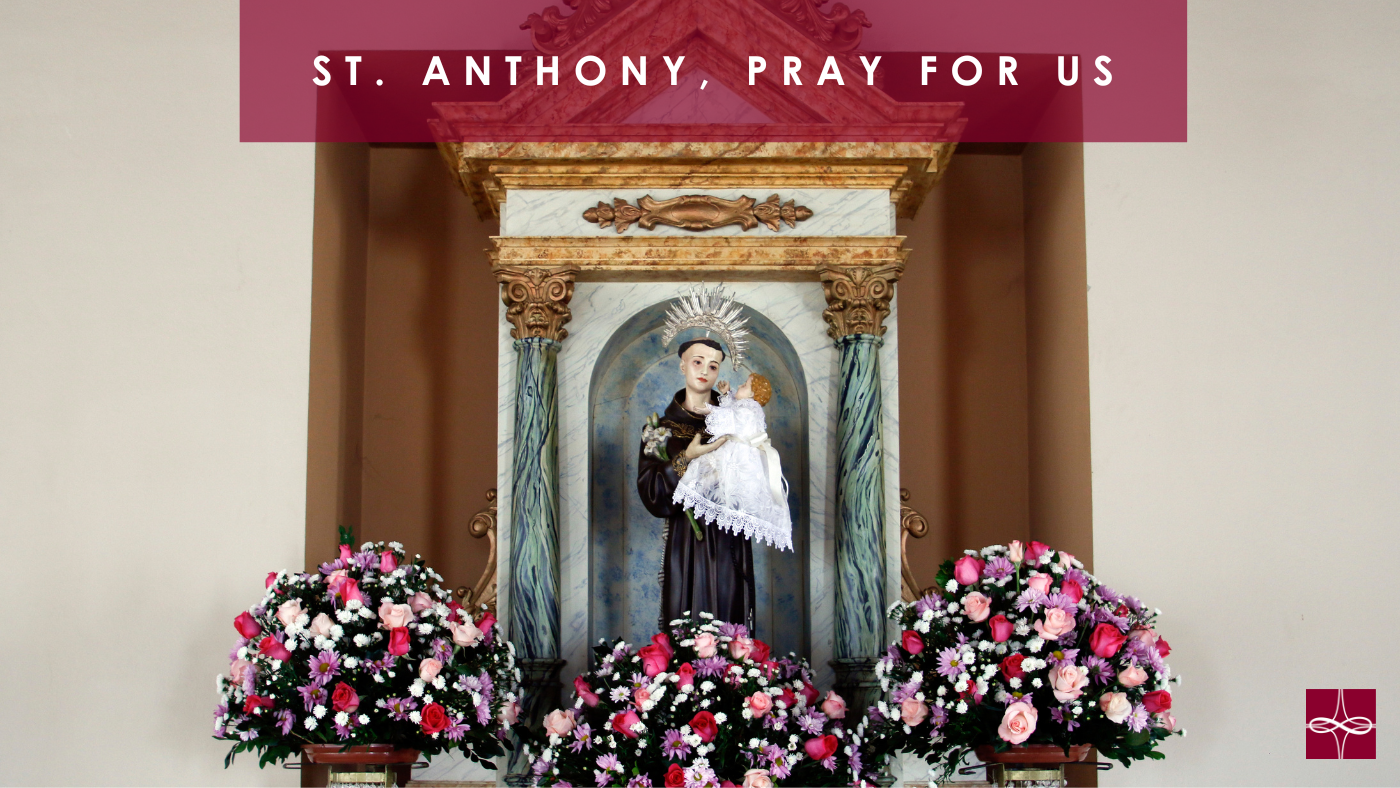

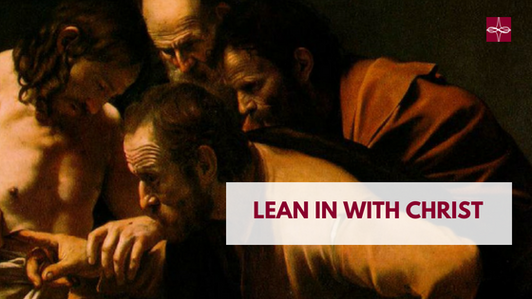

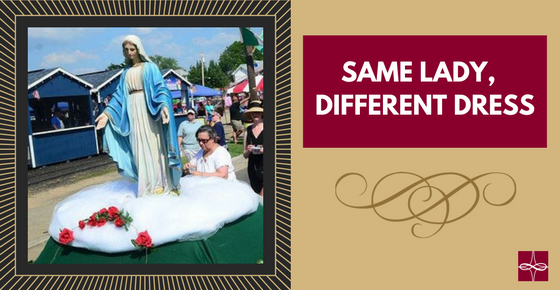
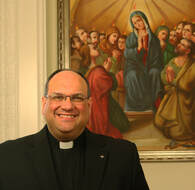
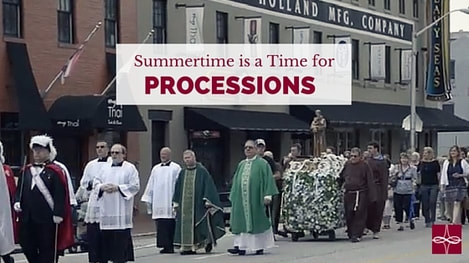
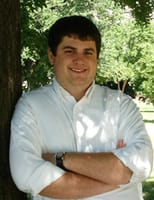
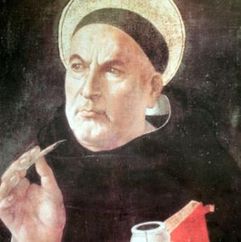
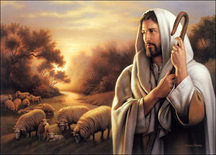
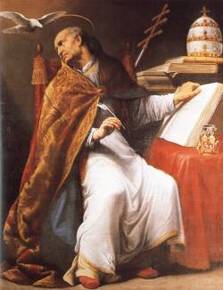
 RSS Feed
RSS Feed